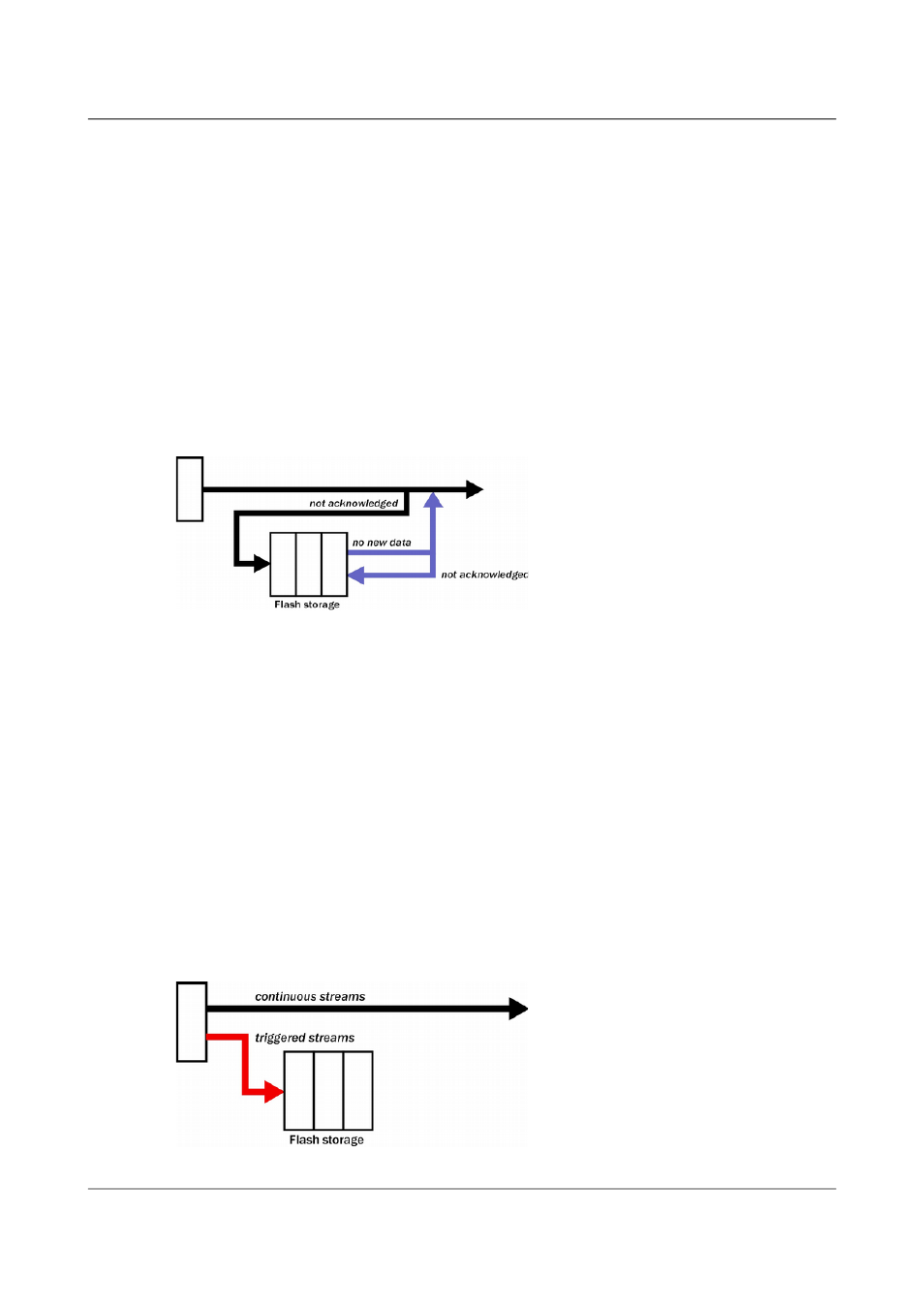Guralp Systems CMG-3ESPCD User Manual
Page 58

CMG-3ESPCD Digital Broadband Seismometer
Using Scream!
instead. FIFO mode will consider a data block successfully transmitted once
it has received an acknowledgement from the next device in the chain. If
there are several devices between you and the instrument, you will need to set
up the transmission mode for each device (if applicable) to ensure that data
flow works the way you expect.
Like all the transmission modes, FIFO mode does not delete data once it has
been transmitted. You can still request anything in the Flash memory using
Scream! or over the command line. The only way data can be deleted is if
they are overwritten (in the RECYCLE buffering mode, see below) or if you
delete it manually.
5.2.5.5 ADAPTIVE
Syntax: ADAPTIVE
Instructs the digitiser to transmit current blocks to clients if possible, but to
store all unacknowledged blocks in the Flash memory and resend them, oldest
first, when time allows. ADAPTIVE mode is best suited for “real-time”
installations where the link between digitiser and client is intermittent or
difficult to access. If the communications link is only marginally faster than
the data rate, it will usually be busy transmitting real-time data. Thus, it may
take a while for the instrument to work through the missed blocks. In this
case, and if your client supports it, you may prefer to use the Block Recovery
Protocol to request missed blocks where possible.
Some software packages (most commonly Earthworm) cannot handle blocks
being received out of time order. If you are using such a package, ADAPTIVE
mode will not work, and may crash the software.
5.2.5.6 DUAL
Syntax: DUAL
58
Issue B - November 2013
